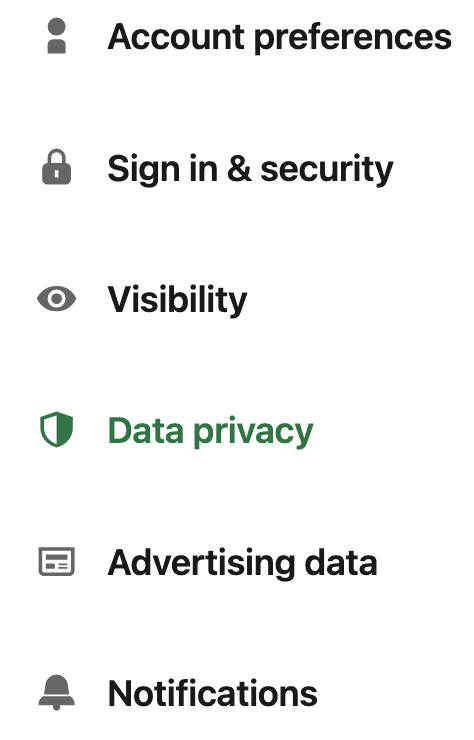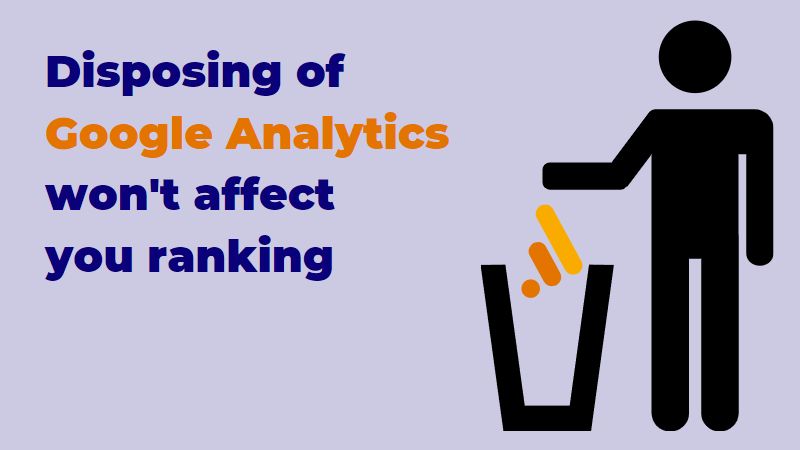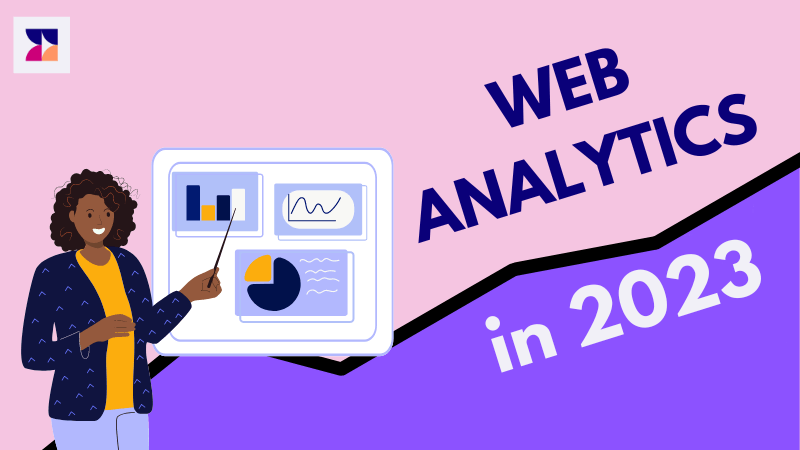With over 830 million members globally, LinkedIn is the go-to platform for professionals seeking connections, opportunities and insights. According to research, it’s the most trusted social media platform out there — but that might be about to change.
For five years in a row, eMarketer’s Digital Trust Benchmark Report found LinkedIn to be a head above other social media platforms when it comes to trust. Across five studied pillars, LinkedIn came top for four: Security, Legitimacy, Community and Ad Experience.
It might come as a surprise, then, to discover LinkedIn was leveraging user data to train its artificial intelligence (AI) models — without notifying users. Not only that, but the platform didn’t refresh its Privacy Policy to reflect its data harvesting activities.
Concerned about your data privacy on LinkedIn? Wondering what, exactly, LinkedIn’s generative AI is up to? This article explores the data LinkedIn collects, its implications for users and marketers, and how to manage your privacy effectively on the platform.
What data is LinkedIn tracking for AI development?
LinkedIn collects a variety of data from its users. This falls into several categories:
User-provided data
When you create a LinkedIn account, you’re asked to supply personal information such as your name, email address, mobile number, location and password. Profiles can also include details like education, work experience, skills, endorsements and profile photos.
Additionally, you may share data through posts and uploads or by syncing your calendar.
All of this is collected and used by LinkedIn.
Data from others
LinkedIn doesn’t just take your word for it when collecting information about you. It tracks what others have to say about you too.
The platform gathers information others post about you, including mentions in articles and professional news.
Usage data
LinkedIn isn’t just interested in who you are. It also monitors what you’re doing, i.e. how you interact with the platform. Cookies and similar technologies log user activity, tracking visits, content views and interactions.
Device and location data
Information about your device, such as your IP address and browser details, is collected. If you’re using a mobile device, LinkedIn may also obtain location data.
Communication data
If tracking your every move isn’t enough, LinkedIn also gathers data on what you say on the platform. Interactions between users, including messages and invitations, are all harvested by LinkedIn.
Employer-provided information
When organisations purchase LinkedIn services, they may provide data about their employees, including job titles and work email addresses. That means certain information about you could be shared with LinkedIn that’s out of your control.
How is LinkedIn using generative AI?
Initially, LinkedIn failed to update its Privacy Policy with how it uses data to train AI models, leading to backlash from privacy-conscious professionals on the platform.
Since then, LinkedIn has updated its Privacy Policy, stating it uses personal data to refine and tailor services, develop AI models and gather insights that render its features more relevant to users.
Here are some of LinkedIn’s AI features:
- Personalised job recommendations: LinkedIn’s AI analyses your career backgrounds, skills and interests to suggest job opportunities that align with your profile.
- AI-generated recruiter messages: LinkedIn matches candidates with job openings based on analyses of job descriptions and candidate profiles.
- Automated content curation: LinkedIn’s AI content algorithm presents you with articles and posts that reflect your interests.
- Search functionality: The platform helps you find information via the AI-powered search function, including using advanced filters allowing for precise searches.
- Messaging and networking: LinkedIn’s AI suggests relevant message responses and potential connections.
Implications of LinkedIn’s AI development and data collection
Naturally, LinkedIn’s collection of user data to develop its AI services without clearly requesting consent or efficiently updating its Privacy Policy sparked controversy. While LinkedIn’s AI features aim to enhance the platform, they also carry implications for ethics and privacy.
We asked marketing experts what LinkedIn’s data collection practices mean for users and businesses on the platform:
User privacy is eroded — and many are oblivious
Many users are unaware of how their interactions are monitored to enhance AI models. LinkedIn was not proactive in informing users of how data is tracked and utilised for AI. It also didn’t provide a clear option to opt out, which is obfuscated within the platform’s settings (more on how to access that later!)
This raises ethical questions about the legitimacy of LinkedIn’s data collection practices and their violation of user privacy.
One of the things that bothers me is the whole idea of consent. Sure, we all technically agree to the terms and conditions when we sign up for platforms like LinkedIn, but let’s be real, most of us don’t know what we’re agreeing to, especially when we talk about how our data is being used to train AI.
LinkedIn collects so much data from us, everything from our profiles to the messages we send, and a lot of that data ends up being used to develop their AI systems. The problem is, they don’t make it obvious, and that feels a little sneaky to me.
What needs to happen is more visibility and control. LinkedIn technically provides the option to opt out of certain types of data usage, but it’s buried in the settings, and most users probably aren’t even aware of it. These options should be front and centre, making it easy for users to understand and manage how their data is being used. Right now, it feels like we don’t have much control over what happens to our data once it’s on their platform.
Potential for bias and discrimination
It’s unclear exactly how LinkedIn’s AI models utilise collected data. This raises further ethical concerns: how are different people targeted information and is there any unintentional discrimination at play?
I'm rather concerned about the lack of transparency surrounding how AI algorithms use our data to provide services like job recommendations. LinkedIn's AI technologies can improve hiring procedures, but I've also noticed that they can unintentionally reinforce biases, reducing hiring diversity.
One of the major concerns I've encountered is the potential misuse of data. For example, LinkedIn's algorithm may prioritise content based on user data, which can create echo chambers and limit exposure to diverse viewpoints. This not only affects user experience but can also skew professional opportunities based on biased content curation.
Corporate confidentiality is compromised
It’s not just individuals’ data that’s at risk. Companies also have cause for concern, especially large enterprises that risk having sensitive data scraped and used in AI training.
Organisations relying heavily on LinkedIn should be wary of exposing proprietary information and business strategies. If it’s discovered that this information is used to train LinkedIn’s generative AI, it could seriously harm a company’s reputation. Stakeholders and clients might lose trust in organisations that do not prioritise data protection.
[Businesses] may face reputational risks if they are seen as complicit in unethical data practices. A company’s alignment with platforms that lack ethical data handling can reflect poorly on its brand values.
Ultimately, the trust is gone
Without requesting user consent or providing transparency over its data collection practices, trust in LinkedIn is eroded.
From my perspective, many users feel their data is being mishandled or exploited without their full consent. This feeling can undermine their willingness to engage on the platform… Ultimately, when platforms prioritise ethical data practices, they not only build trust but also create a more committed user base.
The burning question: how to turn off LinkedIn’s AI development data tracking
If you are in the European Union or UK, there’s good news: LinkedIn has not (yet?) enabled AI data harvesting.
However, how do you turn off LinkedIn’s data collection for AI development if you are in other parts of the world?
To manage your privacy settings and opt out of LinkedIn’s AI data tracking, follow these steps:
- Log into your LinkedIn account and navigate to ‘Settings & Privacy’ by clicking your profile image icon in the top menu.
- Click ‘Data Privacy’ on the left.

Lessons from LinkedIn’s AI blunder
LinkedIn’s data collection practices for AI development raise huge ethical concerns. Users are often unaware of how their information is harvested and used, leading to an invasion of privacy, a sense of mistrust and hesitation to engage with the platform.
No longer a beacon of trust among social media platforms, the LinkedIn example teaches us one thing: ethical data handling is essential for brand reputation. But for LinkedIn, is it too late?
Wide Angle Analytics is a Google Analytics alternative that puts privacy at the forefront. Get a full view of your metrics with our strictly GDPR-compliant platform, ensuring data accuracy, user consent and trust. Click here to try a free demo today.
Lauren Meredith is a seasoned content marketing strategist and writer helping online businesses connect with their audience and maximise organic success. Her SEO content secures #1 positions on Google, features in publications such as The Independent, Yahoo and academic domains, and has won an award at the Digital Growth Awards.







